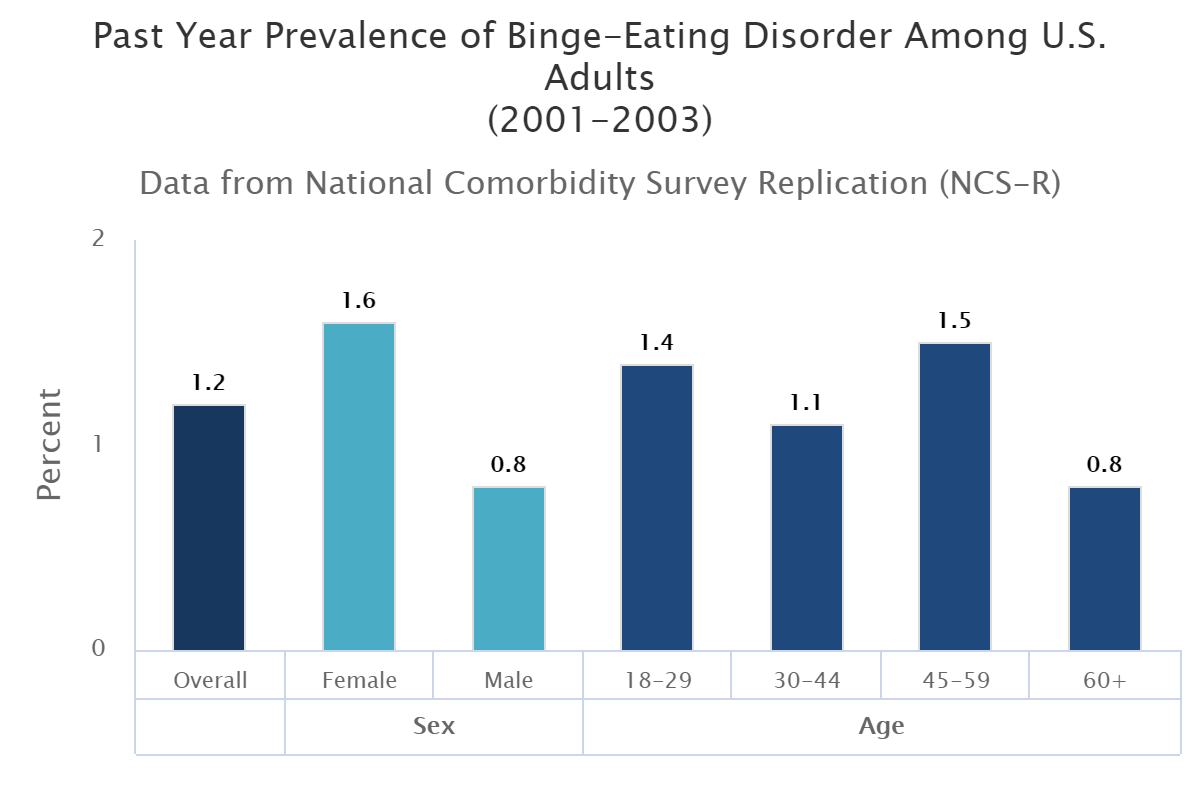3 Steps to Address Binge Eating
Eating a tub of ice cream after a breakup seems to be an accepted behavior in response to a stressful situation. However, it also reveals a relationship to food that, in excess, can be problematic and upsetting.
Source: National Institute of Mental Health https://www.nimh.nih.gov/health/statistics/eating-disorders.shtml#part_155059
Peer pressure, media portrayals of beauty, and low quality of food are some of the reasons for the high rates of eating disorders and disordered eating behaviors. Problems with eating can be varied, but all of them can cause major disruption to life and a lot of distress to individuals and their families.
Binge Eating Disorder (BED) is the most common eating disorder in the US, affecting 3.5% of women, 2% of men and approximately 1.6% of adolescents.
The most recent version of the psychiatric diagnostic manual, DSM 5, added Binge Eating Disorder to the other better know eating disorders (anorexia and bulimia).
Binge Eating Disorder symptoms described by the DSM V include:
1. Recurrent and persistent episodes of binge eating
2. Binge eating episodes are associated with three (or more) of the following:
o Eating much more rapidly than normal
o Eating until feeling uncomfortably full
o Eating large amounts of food when not feeling hungry
o Eating alone because of being embarrassed by how much one is eating
o Feeling disgusted with oneself, depressed, or very guilty after overeating
3. Marked distress regarding binge eating
4. Absence of purging or other compensatory behaviors.
Both recognizing and treating a binge eating Disorder can be difficult
Here are a few strategies that can help to start the recovery process:
1. Recognize the Problem
Recognizing that a problem exists is the first step to any recovery. It can be difficult to spot a binge eating disorder. In order to recognize a binge eating disorder, one must be able to identify an unhealthy relationship to food.
Everyone overeats sometimes. However, if you are eating large amounts of food until uncomfortable, eating in private, eating even when you’re not hungry, feel guilty, depressed or disgusted after these periods, and these behaviors persist at least once a week for three months- this characterizes binge eating disorder (2). If you recognize any of these behaviors in your own life, there are strategies you can use to address your binge eating disorder and create a healthier relationship to food.
2. Locate the Triggers and Make a Plan
Studies show that binge eating disorders often have underlying emotional causes (1). If you recognize a temptation to binge, whether or not you act on it, observe your feelings, thoughts and beliefs both before and after the binge. Write these triggers in a journal to help increase your awareness.
When you notice a pattern to your binges, you can begin to address it and have the option to make different choices. You can call a friend and talk it through, divert your attention and journal about the experience, or go on a walk. These are just some examples and you can decide what is best for you.
3. Foster a Healthier Relationship to Food
Studies show that certain dieting behaviors that encourage preoccupations about or excessive restrictions of food can result in binging (1). Therefore, focusing on intuitive and healthy eating and being flexible with one's diet can reduce the urge to binge while nourishing the body optimally.
Think of a baby or a dog— how do they view eating? They feel joy with their meals, and appreciate food for nourishing their body and providing an enjoyable experience. A mind preoccupied with the next meal does not have to stay that way! Reprogramming the mind to rediscover an appreciation of food can help to limit binges. But how can this be done?
Eating three full meals a day, eating when hungry (but not too hungry), and cooking your meals with interesting ingredients can help you rediscover the joy in food and eating. Further, making sure you have healthy and nourishing snacks on hand— such as a handful of almonds or an apple— can be helpful to avoid becoming too hungry and overeating when you get the opportunity.
Conclusion
Binge eating disorder can be quite challenging and while you can do a lot on your own, sometimes we all need some help and support. Working with a psychotherapist can be helpful in sorting out a complicated relationship with food.
References:



